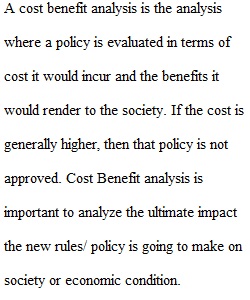


Q As your initial post, 1. Using the principles of cost-benefit analysis, discuss the benefits to consumers who would participate in the market for legalized marijuana. Discuss the benefits to firms who would participate in the market for legalized marijuana. 2. While consumers would pay the market price in the market for legalized marijuana, is that the only source of total cost to consumers? Is it the total cost to society (i.e. any consumer-oriented externalities)? 3. While firms would have to pay for inputs to participate in the market for legalized marijuana, is that the only source of total cost to firms? Is it the total cost to society (i.e. any firm-oriented externalities)? 4. Is the tax-revenue relevant in the cost-benefit analysis? 5. Assume the highest-valued alternative is to legalize only for medical use. For the policy from illegal use to legalizing for recreational use, do you think the benefits will exceed the costs? Why or why not?
View Related Questions